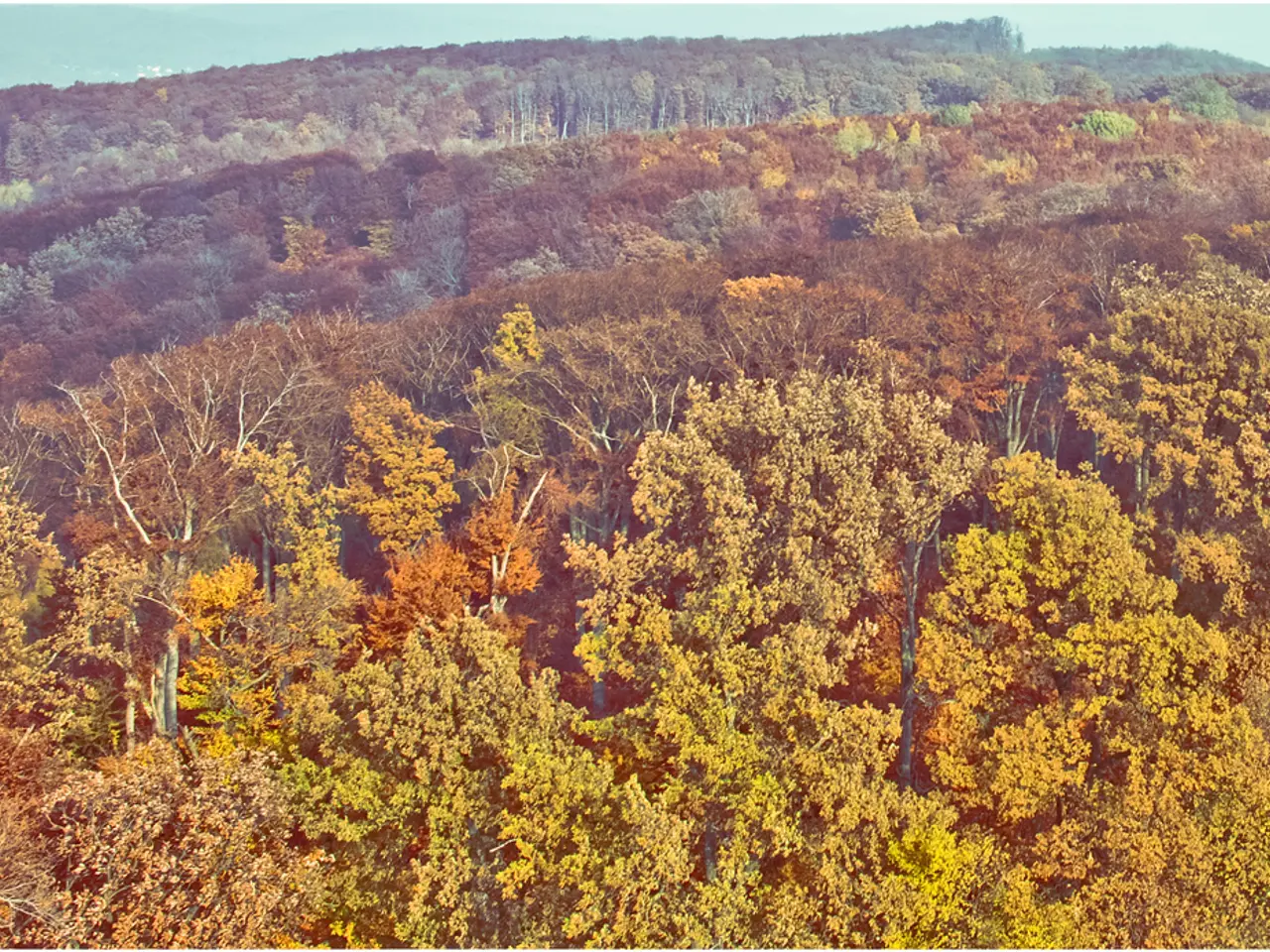Challenges and Solutions for Developing Practical Skills in Nature-Based Estimation
In the pursuit of a sustainable future, scientists and policymakers are turning to nature-based solutions to address environmental challenges such as climate change and biodiversity loss. These solutions utilize natural processes to tackle complex issues, providing a more holistic approach to environmental management.
Traditional flood models often fall short when it comes to capturing the dynamic protective capabilities that natural systems offer during extreme weather events. Advanced software platforms, however, integrate land use, climate data, and hydrology to predict water quality outcomes more accurately. These platforms are instrumental in evaluating nature-based solutions like wetland restoration and floodplain management.
One such project, the MoReNat-Q, is funded by the Federal Ministry of Education and Research. EFTAS, a company involved in the project, develops quantum and photonic laser measurement technologies with drones to precisely capture greenhouse gas emissions from peatlands. The Leibniz Centre for Agricultural Landscape Research (ZALF) also contributes to the project, conducting research on environmental monitoring, bioeconomy, and sustainable land use through interdisciplinary approaches.
Measuring biodiversity impacts is another challenge that requires innovative solutions. Developing multi-species assessment models with indicator species monitoring systems and adaptive management frameworks can help measure these impacts in real-time, allowing for adjustments as needed.
Water quality projects face challenges from multiple pollution sources, including agricultural runoff, urban stormwater, and industrial discharge. Calculating carbon sequestration rates is also complex due to differences in ecosystems, soil composition, plant species, and climate conditions. However, implementing comprehensive watershed models like SWAT can address these complexities by simulating multiple pollutant sources and transport mechanisms simultaneously.
Seasonal variations add another layer of complexity, requiring advanced remote sensing technologies and machine learning algorithms for accurate measurement. Integrated watershed modeling using tools like SWAT can help separate individual project contributions from background improvements.
Nature's complexity demands flexibility in estimation strategies, as one-size-fits-all solutions can't be relied upon when dealing with dynamic ecosystems and changing environmental conditions. Combining traditional methods with cutting-edge technologies like remote sensing and machine learning algorithms improves estimation accuracy.
Advanced probabilistic models help account for weather uncertainties in flood protection planning. Machine learning algorithms analyze historical extreme weather events and project future flood scenarios with 85-95% accuracy. Monte Carlo simulations can process thousands of weather scenarios to determine flood reduction effectiveness across multiple probability ranges.
Measuring community health improvements from nature-based solutions presents the most complex estimation challenge yet. Mobile health platforms collect real-time data from community members, while focus groups capture qualitative benefits that numbers alone can't express. Participatory approaches use standardized wellness questionnaires alongside objective health metrics like blood pressure readings and activity trackers.
Mastering nature-based estimation challenges requires adaptive thinking and innovative measurement approaches. The investment in developing advanced estimation skills pays dividends through more successful nature-based projects and better environmental outcomes for the community.
However, quantifying intangible benefits that nature provides for free, such as clean air, pollination, and water filtration, is difficult to justify financially when restoration requires significant upfront investment. Despite these challenges, the potential benefits of nature-based solutions make them a worthwhile pursuit for a sustainable future.
Read also:
- Understanding Hemorrhagic Gastroenteritis: Key Facts
- Stopping Osteoporosis Treatment: Timeline Considerations
- Tobacco industry's suggested changes on a legislative modification are disregarded by health journalists
- Expanded Community Health Involvement by CK Birla Hospitals, Jaipur, Maintained Through Consistent Outreach Programs Across Rajasthan








